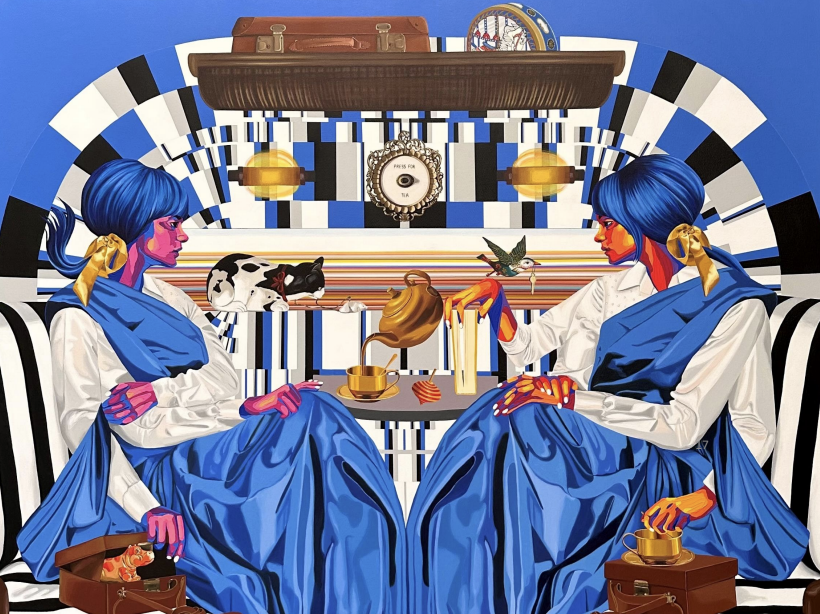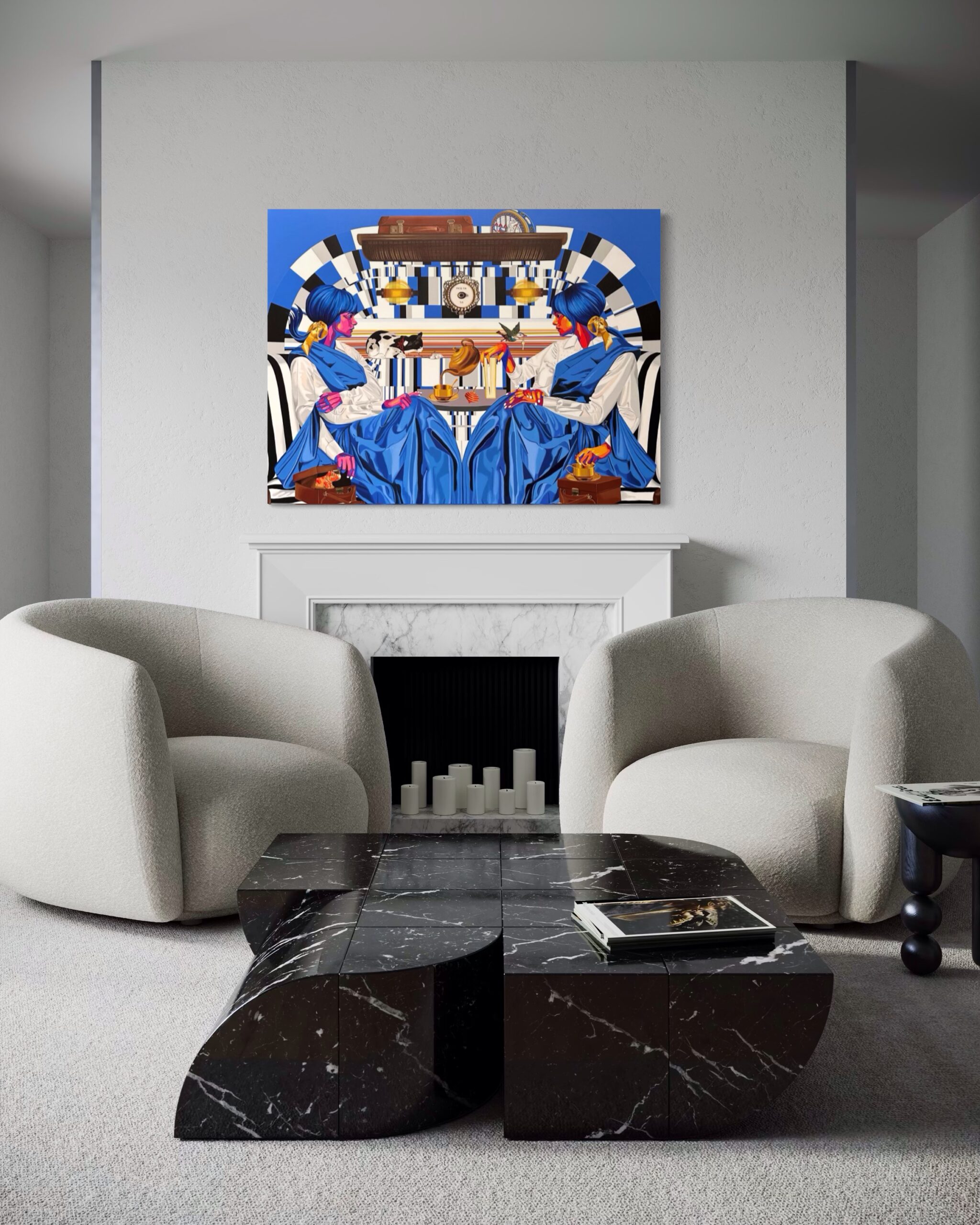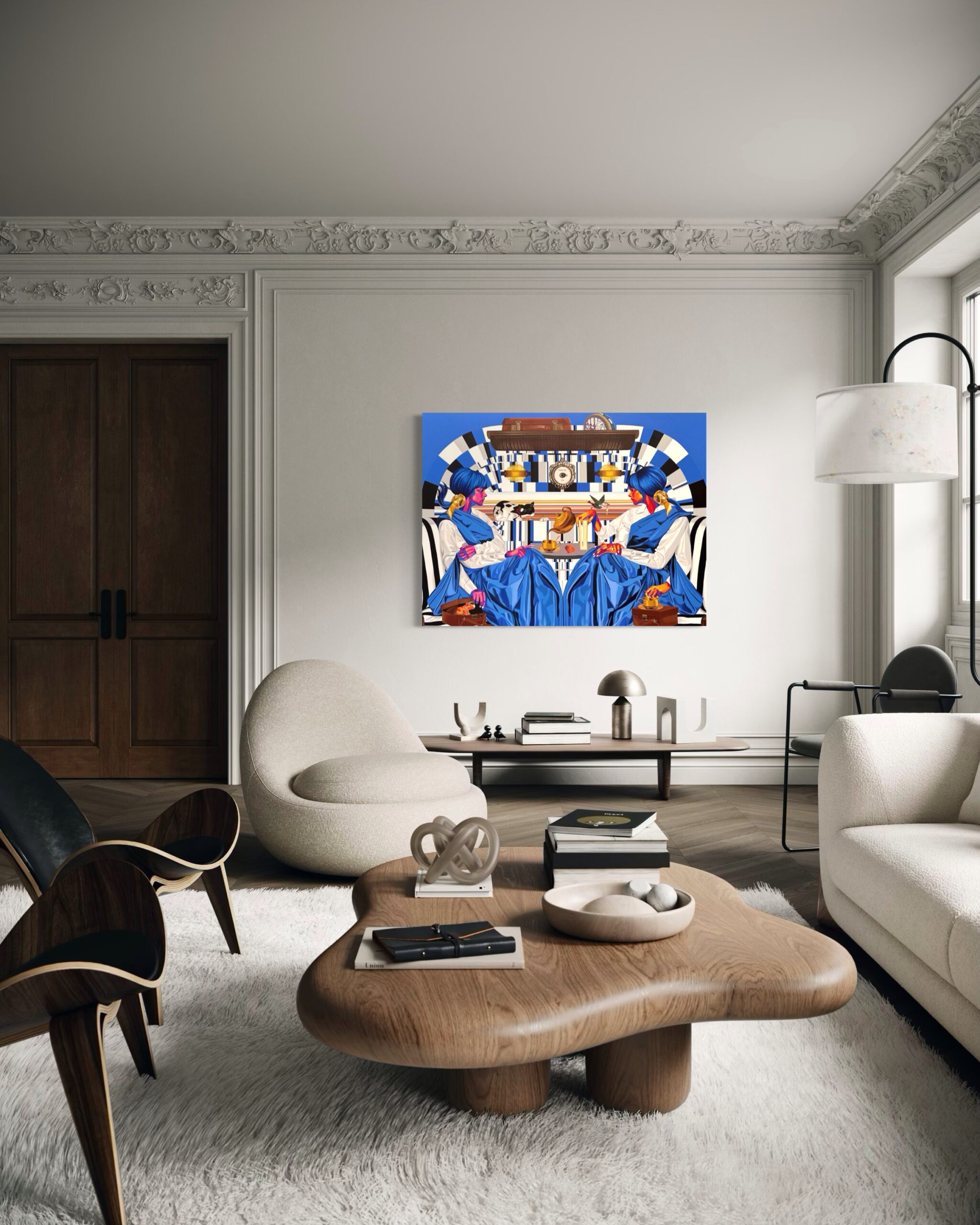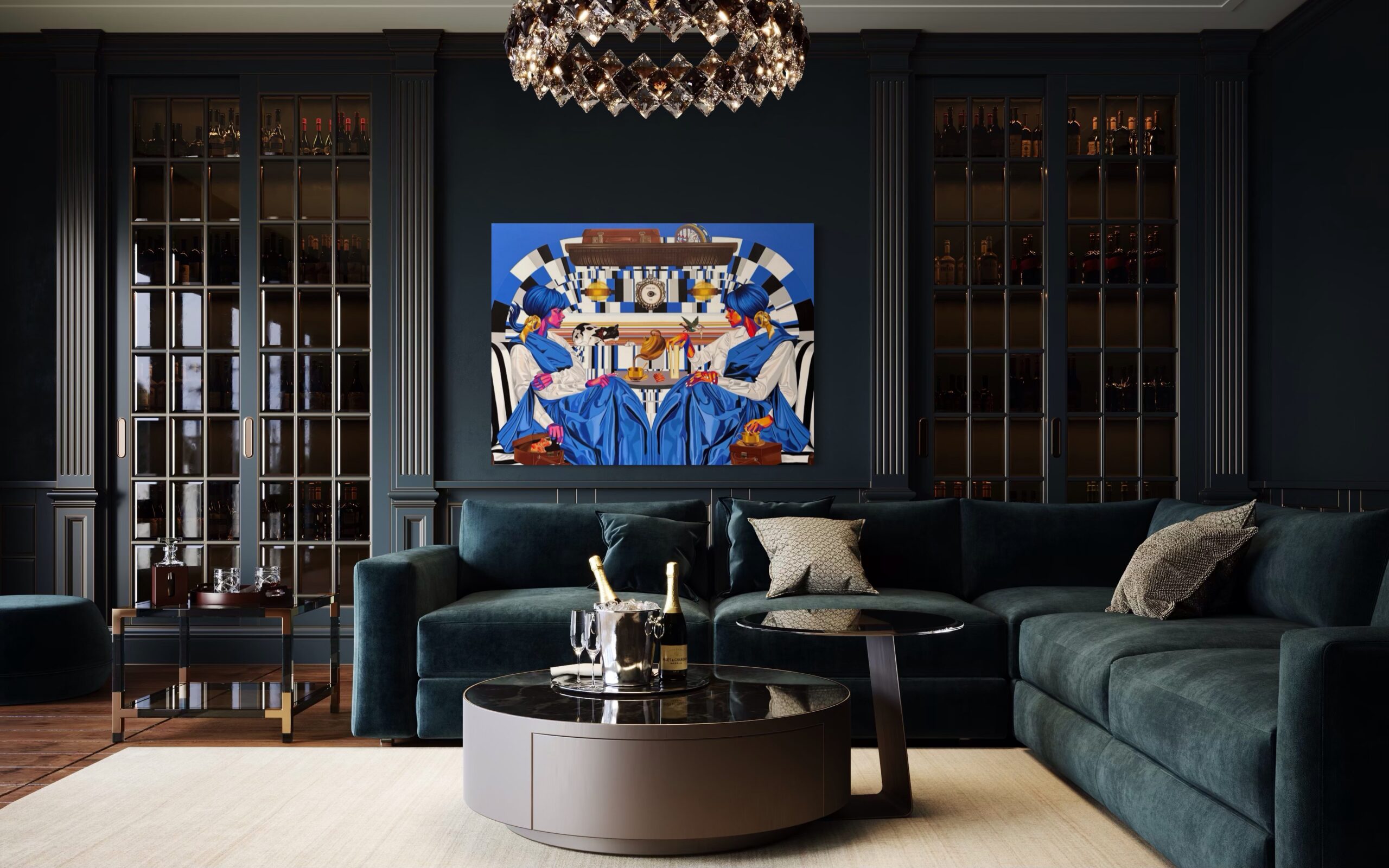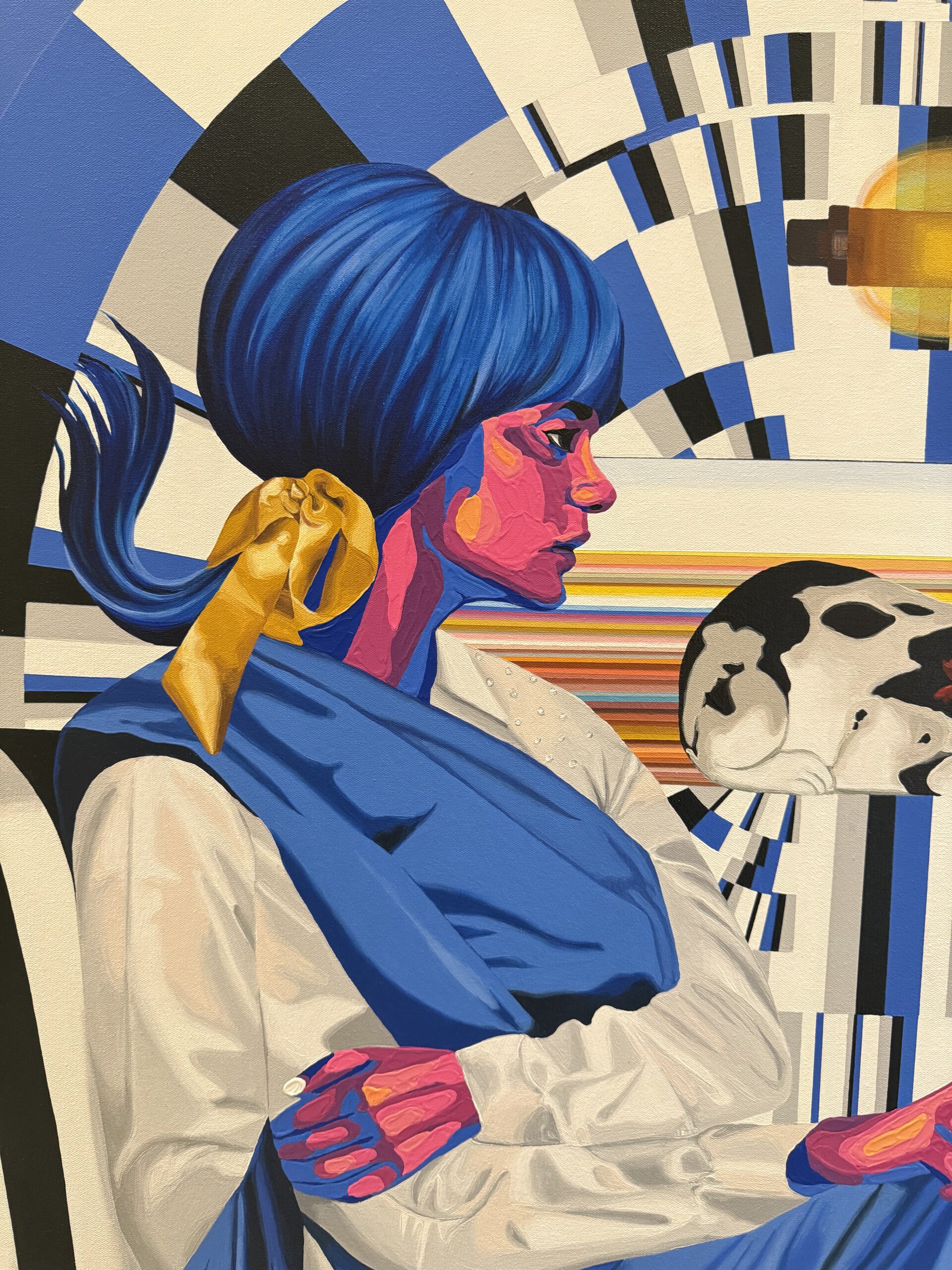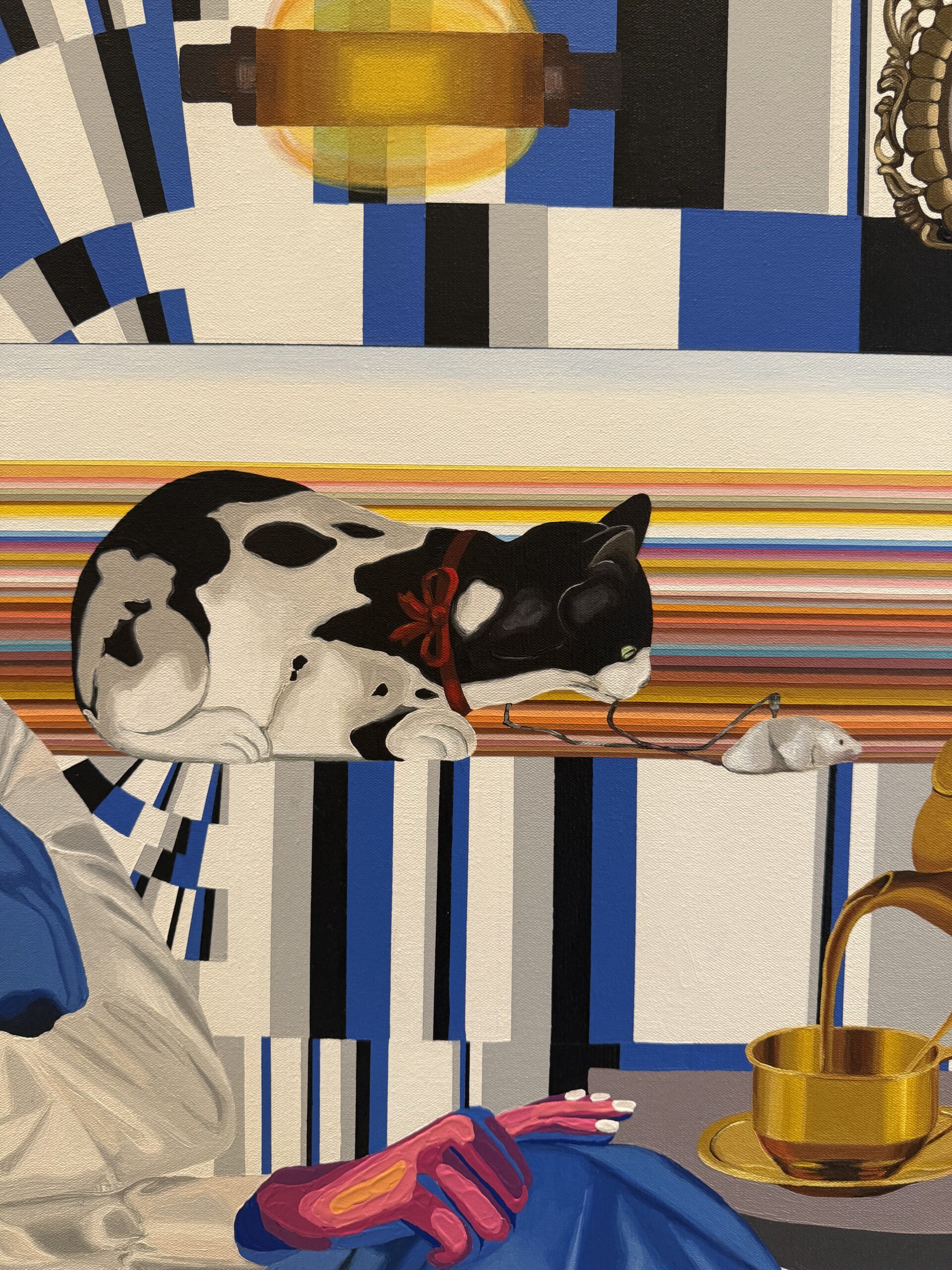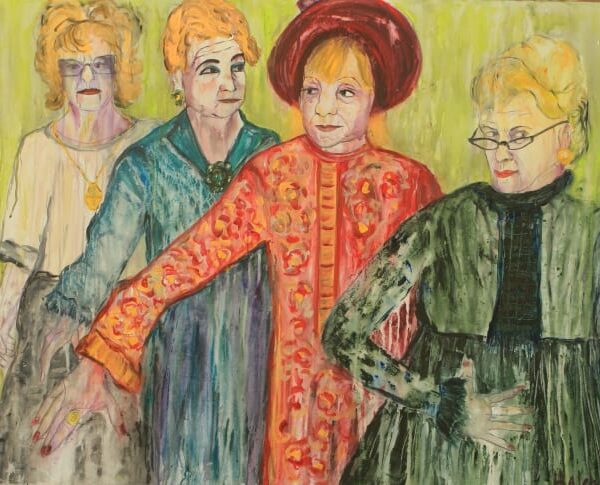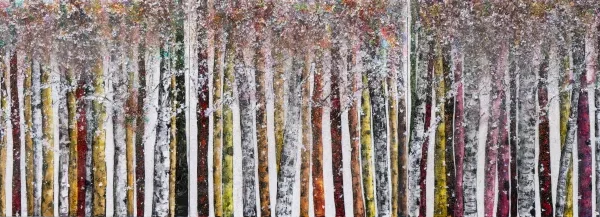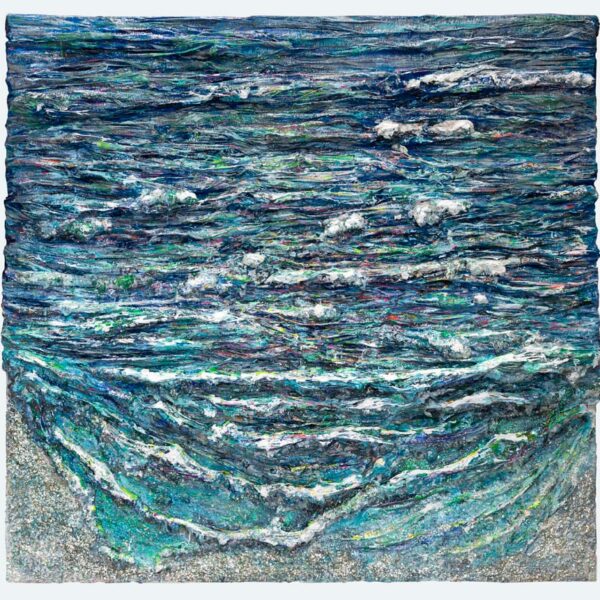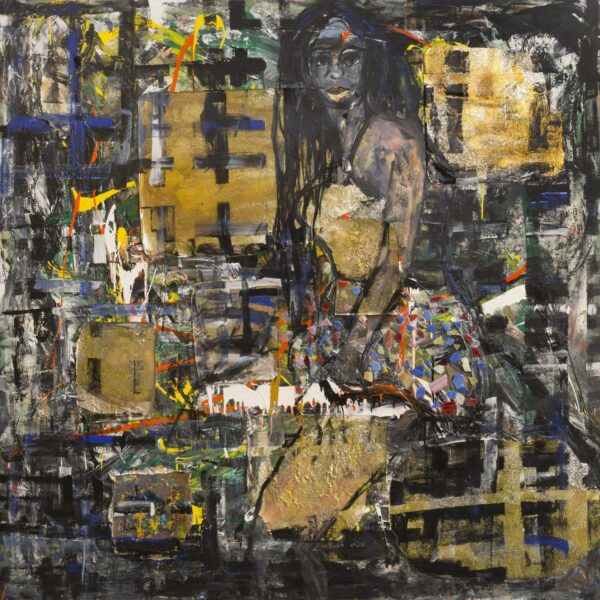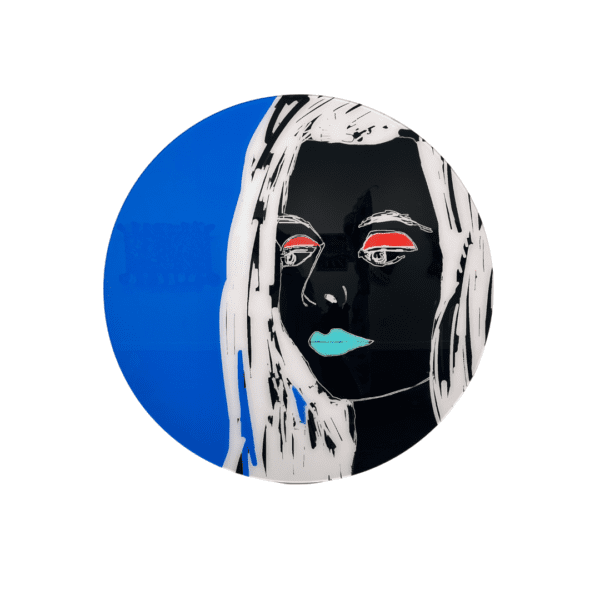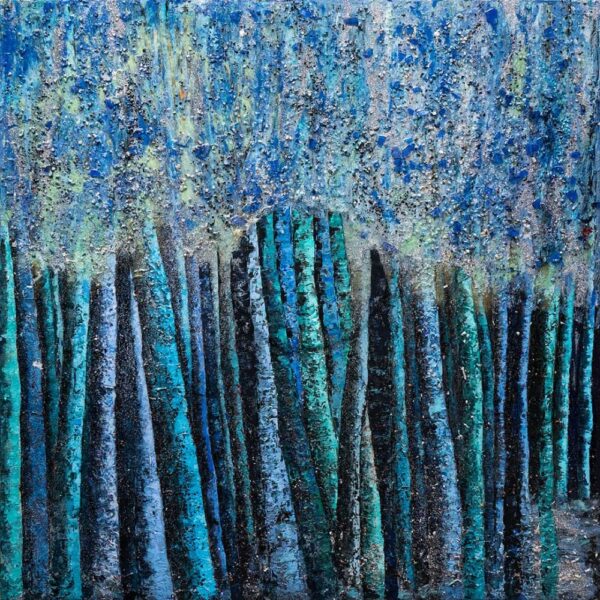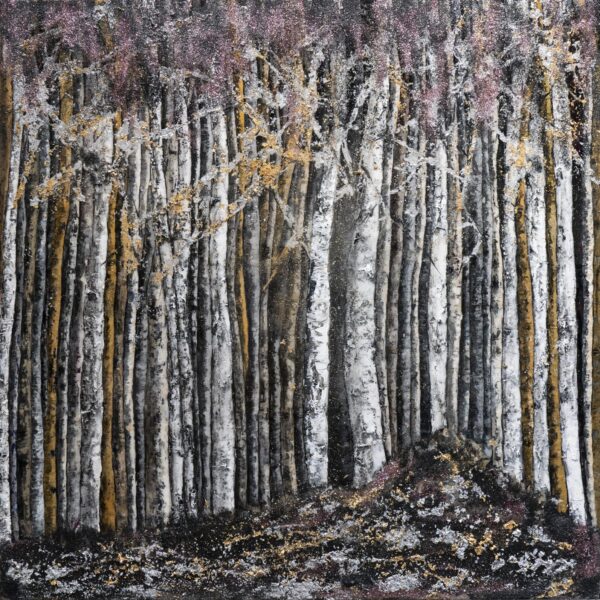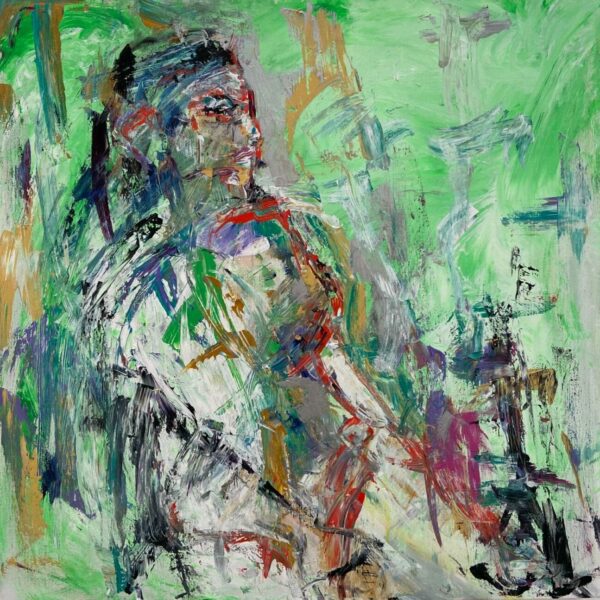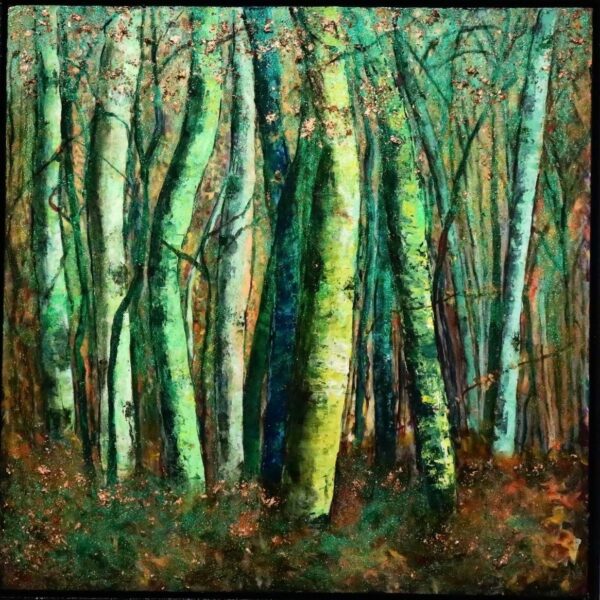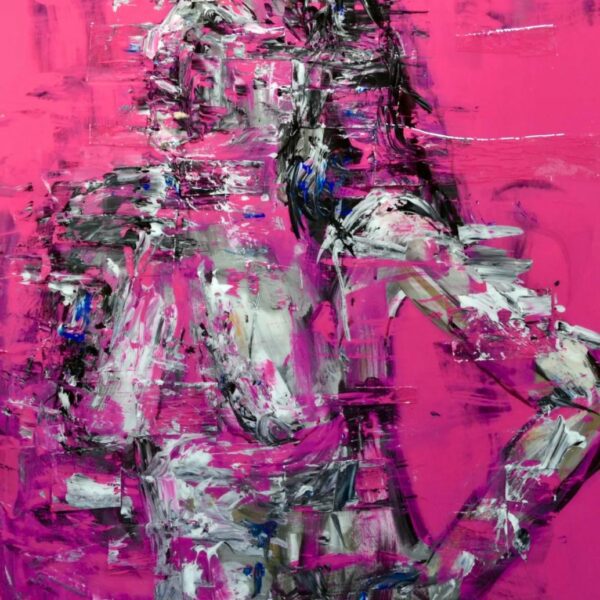Keerthana Kumar
40 x 65″
Acrylic on Canvas
Keerthana Kumar’s mesmerizing composition “Tea For Two, Change For One” is a kaleidoscopic exploration of duality, perception, and constructed reality, where symmetry and symbolism converge in a meticulously orchestrated visual experience. Two identical female figures, rendered in vivid hues of electric blue, magenta, and gold, sit across from one another in an almost ritualistic exchange—one pouring tea, the other poised to receive. Their intensely stylized forms, with angular features and hyper-saturated skin tones, contrast against the rigid geometry of the background, creating a surreal tension between organic presence and structured space.
Set within what appears to be the luxurious interior of a train compartment, the background dissolves into a dizzying matrix of black, white, and blue geometric patterns, echoing the aesthetics of Op Art and Modernist design. The theatricality of the space is heightened by the meticulously placed symbolic elements—a resting cat, a golden tea set, a hovering bird with a key, and a vintage “Press for Tea” button—all suggesting a scene that transcends mere domesticity, hinting at hidden narratives of power, secrecy, and ritual.
Kumar’s masterful use of symmetry and reflection transforms the composition into an almost psychological study of self-perception. Are these figures twins, mirrored versions of the same self, or representations of internal dialogue? Their locked gazes and synchronized gestures suggest a conversation beyond language—one of power, identity, and self-exploration.
The artist’s sharp, hyper-stylized realism, combined with a bold contemporary color palette, places this work in dialogue with postmodern portraiture and contemporary surrealism. Kumar challenges the viewer to navigate the boundaries between reality and artifice, the familiar and the uncanny, creating a piece that is both aesthetically commanding and conceptually rich. Above all else, “Two For Tea, Change For One” is an invitation to decode a world of hidden symbols, layered narratives, and the interplay between structure and chaos.

